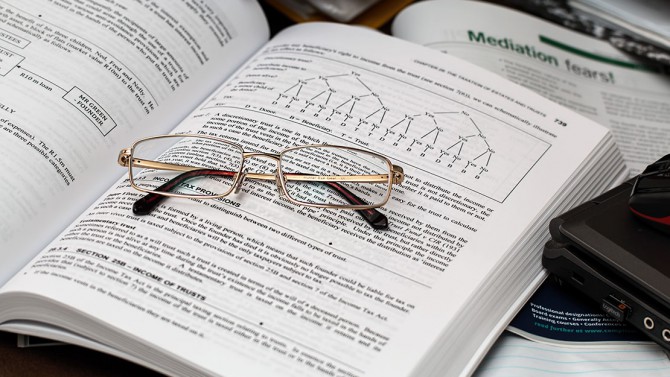

ผู้วิจัย
Dusit Uthitsunthorn1 and Thanatchai Kulworawanichpong2
บทคัดย่อ
This paper presents optimal coordination of over-current relays by using improved harmony search method (IHS). The objective function of the relay coordination problem is to minimize the operation time of associated relays for given fault conditions in the protection system. The control variables used in this paper are the pickup current and the time dial setting of the relays. The proposed method was tested with 5-bus, WSCC 9-bus and standard IEEE 14-bus test systems. For benchmarking, sequential quadratic programming (SQP) and genetic algorithm (GA) were employed to solve this optimal relay coordination problem. The results showed that the IHS is capable to minimize the operation time of relays in the entire system. As a result, all search algorithms can solve optimal coordination relay which the improved harmony search method gives the best solutions for optimal coordination relay setting.
บรรณานุกรม
[1] A.H. El-Abiad and F.J.Jaimes, A method for optimum scheduling of power and voltage magnitude, IEEE Transactions. Power Apparatusand System.,vol. PAS-88, 1969, pp. 413 – 422. [2] M.O. Mansour and T.M. Abdel-Rahman, Non-linear VAR optimization using decomposition and coordination, IEEE Transactions. Power Apparatusand System, vol. PAS-103, 1984, pp. 246 – 255. [3] H.W. Dommel and W.F. Tinney, Optimal power flow solutions,IEEE Transactions. PowerApparatu. System, vol. PAS-87, 1968, pp. 1866 – 1876. [4] A.J. Wood andB.F. Wollenburg, Power Generation Operation and Control, 2 (John Wiley & Sons, 1996) [5] Y. Hong-Tzer, Y. Pai-Chuan and H. Ching-Lien, Evolutionary programming based economic dispatch for units with non-smooth fuel cost functions,IEEE Transactions Power System, vol. 11, 1996, pp. 112 – 118. [6] W. Kit Po, Computational intelligence applications in unit commitment, economic dispatch and load flow, The 4thInternational Conference on Advances in Power System Control, Operation and Management (APSCOM-97),vol. 1, 1997, pp. 54-59. [7] D.C. Walters andG.B.Sheble, Genetic algorithm solution of economic dispatch with valve point loading, IEEE Transactions on Power System, vol. 8, 1993, pp. 1325-1332. [8] D. KhanhandW. Kit Po, Artificial intelligence-based machine-learning system for thermal generator scheduling, IEE Proceeding. Generation, Transmission and Distribution, vol. 142, 1995, pp. 195 – 201. [9] J.T. Ma and L.L. Lai, Evolutionary programming approach to reactive power planning, IEE Proceeding. Generation, Transmission and Distribution, vol. 143, 1996, pp. 365 – 370. [10] T.L. Nguyen and Q.A. Nguyen, Application of artificial bee colony algorithm (ABC) for reconfiguring distribution network, The 10thInternational Conference on Computer Modelling and Simulation (ICCMS-2011),vol. 1, 2010, pp. 102-106. [11] D. Karaboga, A new design method based on artificial bees colony algorithm for digital IRR filters, Journal of the Franklin Institute, vol. 346, 2009, pp.328 – 348. [12] D. Karaboga and B. Busturk, A powerful and efficient algorithm for numerical function optimization: artificial bee colony optimization, Journal of Global Optimization, vol. 39, 2007, pp. 459 – 471. [13] A. Jr. Santos and G.R.M. da Costa, Optimal-Power-Flow Solution by Newton's Method Applied to An Augmented Lagrangian Function, IEE Proceeding. Generation, Transmission and Distribution,vol. 142, 1995, pp. 33 – 36. [14] M.G. Murlithi, Optimal Power Flow for The High Voltage Network of The Kenya Power System, The 4thIEEE Africon, vol. 1, 1996, pp. 162 – 168. [15] H.C. Leung, and T.S. Chung, Optimal Power Flow with A Versatile FACTS Controller by Genetic Algorithm Approach, Power Engineering Society Winter Meeting, vol. 4, 2000, pp. 2806-2811. [16] M.A. Abido, Optimal Power Flow using Tabu Search Algorithm,Electric Power Components and Systems, vol. 30, 2002, pp. 469-483 [17] M.A.Abido,: “Optimal Power Flow using Particle Swarm Optimization”, Electrical Power and Energy Systems, vol. 24, 2002, pp. 563-571. [18] G. Zwe-lee,Constrained optimal power flow by mixed-integer particle swarm optimization, IEEE Power Engineering Society General Meeting,vol. 1,2005, pp. 243 – 250. [19] K. Vaisakb andL.R. Srinivas, Differential Evolution Approach for Optimal Power Flow Solution, Journal of Theoretical and Applied Information Technology,vol. 1, 2005, pp. 261 – 268. [20] M. Younes, M. Rahli and L. Abdelhakem-Koridak, Optimal Power Flow Based on Hybrid Genetic Algorithm, Journal of Information Science and Engineering,vol. 1, 2007, pp. 1801 – 1816. [21] K. Tangpatiphan andA. Yokoyama, Evolutionary Programming Incorporating Neural Network for Transient Stability Constrained Optimal Power Flow, IEEE International Conferences on Power System Technology,vol. 1, 2008, pp. 1 – 8. [22] Z. Wenjuan,L. Fangxing andL.M. Tolbert, Voltage Stability Constrained Optimal Power Flow (VSCOPF) with Two Sets of Variables (TSV) for Reactive Power Planning, IEEE-PES. Transmission and Distribution Conference and Exposition, vol. 1, 2008, pp. 1 – 6. [23] I. Oumarou, J. Daozhuo and Y. Cao, Particle Swarm Optimization Applied to Optimal Power Flow Solution, International Conference on Natural Computation (ICNC’09), vol. 3, 2009, pp. 248 – 288. [24] K. Tangpatiphan and A. Yokoyama, Optimal Power Flow with steady-state voltage stability consideration using Improved Evolutionary, PowerTech, IEEE Bucharest, 2009, pp. 1 – 7. [25] V. PhanTu, L. DinhLuong, V. NgocDieu and J. Tlusty, A Novel Weight-Improved Particle Swarm Optimization Algorithm for Optimal Power Flow and Economic Load Dispatch Problems, IEEE PES, Transmission and Distribution Conference and Exposition, 2010, pp. 1 – 7. [26] D. Karaboga and B. Basturk, A Powerful and Efficient Algorithm for Numerical Function Optimization: Artificial Bee Colony algorithm (ABC) Algorithm, Journal of Global Optimization. vol. 39, 2007, pp. 459 – 471. [27] Q. Haiyan andS. Xinling, On the Analysis of Performance of the Improved Artificial-Bee-Colony Algorithm,International Conferenceon Natural Computation (ICNC’08), vol. 7, 2008, pp. 654 – 658. [28] C. Chidambaram and H.S. Lopes, A New Approach for Template Matching in Digital Images Using An Artificial Bee Colony Algorithm, World Congress on Nature & Biologically Inspired Computing (NaBIC’09), 2009, pp. 146 – 151. [29] J. Nocedal, and S.J. Wright, Numerical optimization, (Springer, 2000). [30] S.G. Nash and A. Sofer, Linear and nonlinear programming, (McGraw-Hill, 1996). [31] Z. Haibo, Z. Lizi andM.Fanling,Reactive power optimization based on genetic algorithm, International Power Conference on Power System Technologyvol. 2, 18-21 August, 1998, pp.1448 – 1453. [32] K. Somsai, A. Oonsivilai, A. Srikaew and T. Kulworawanichpong,Optimal PI controller design and simulation of a static var compensator using MATLAB’s SIMULINK, The 7th WSEAS International Conference on Power Systems, 2007, pp. 30 – 35. [33] K. Vaisakh, P. Praveena andS. Rama MohanaRao, Solving optimal power flow problems using bacterial swarm optimization algorithm,International ConferenceAdvance in Power System Control,Operation and Management (APSCOM’09), 2009, pp. 1 – 7. [34] X.P. Zhang and E.J. Handschin, Advanced implementation of UPFC in a nonlinear interior-point OPF, Generation, Transmission and Distribution, vol. 148, 2006, pp. 489 – 496. [35] P.N. Biskas, N.P. Ziogos, A. Tellidou, C.E. Zoumas, A.G. Bakirtzis and V. Petridis, Comparison of two metaheuristics with mathematical programming methods for the solution of OPFGeneration, Transmission and Distribution, vol. 153, 2006, pp. 16 – 24. [36] M.J. Rider, C.A. Castro, M.F.Bedrinana and A.V. Garcia, Towards a fast and robust interior point method for power system applications, Generation, Transmission and Distribution, vol. 151, 2004, pp. 575 – 581.
หน่วยงานการอ้างอิง
International Review of Electrical Engineering (IREE)








ความคิดเห็น